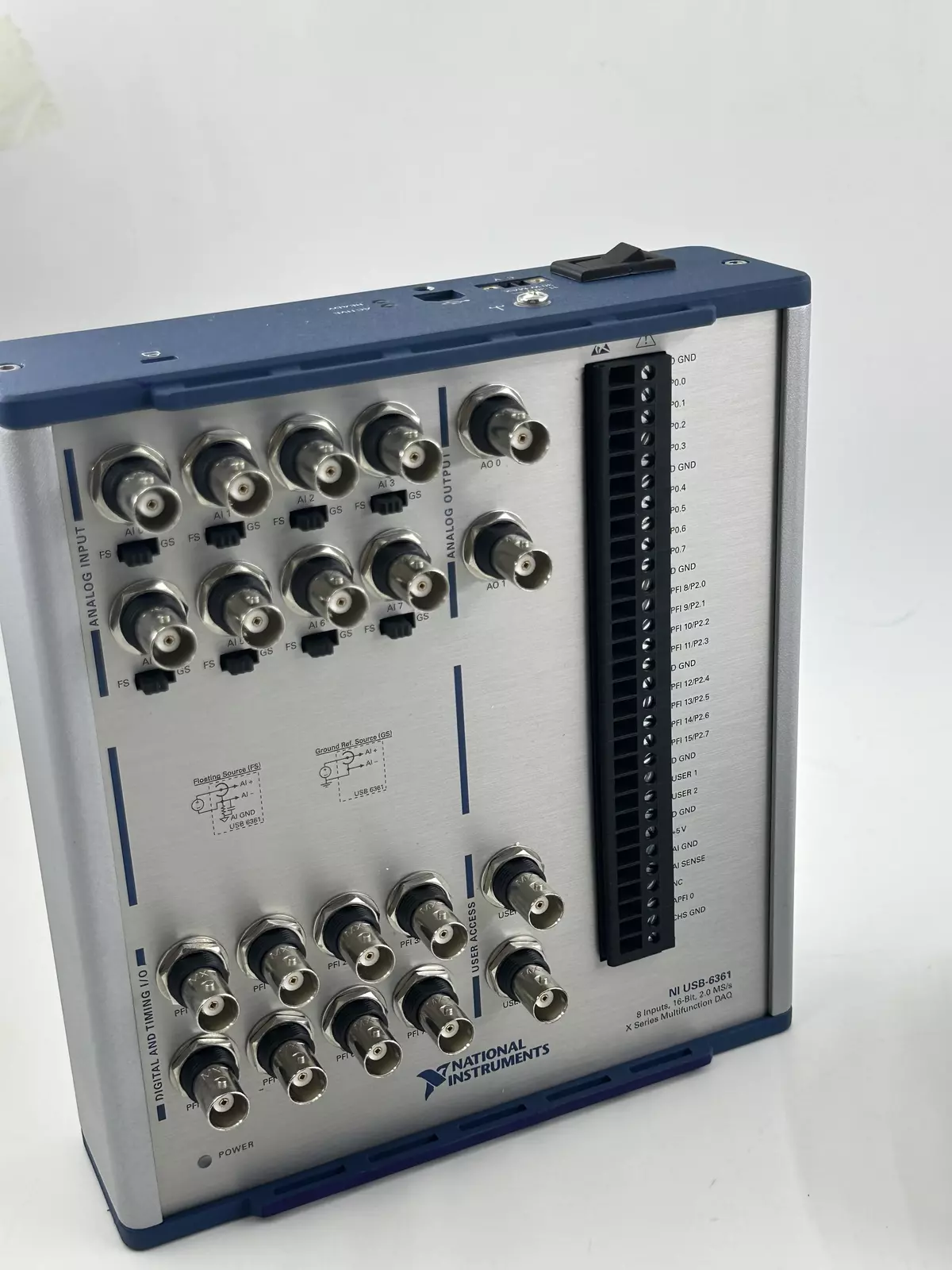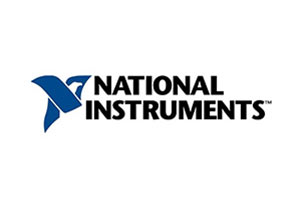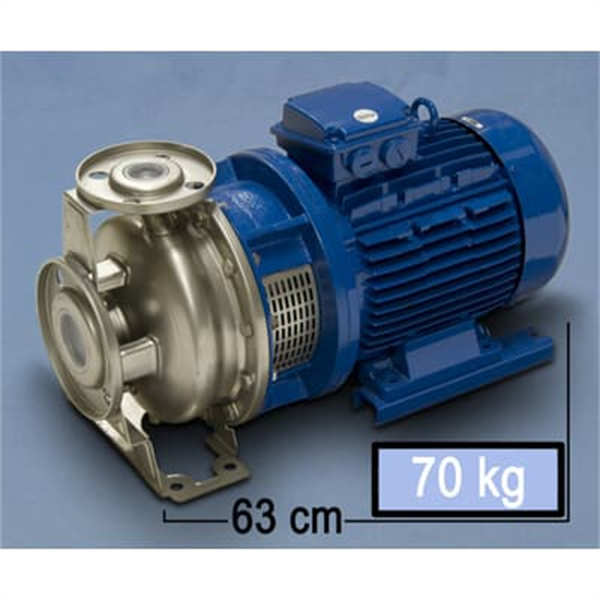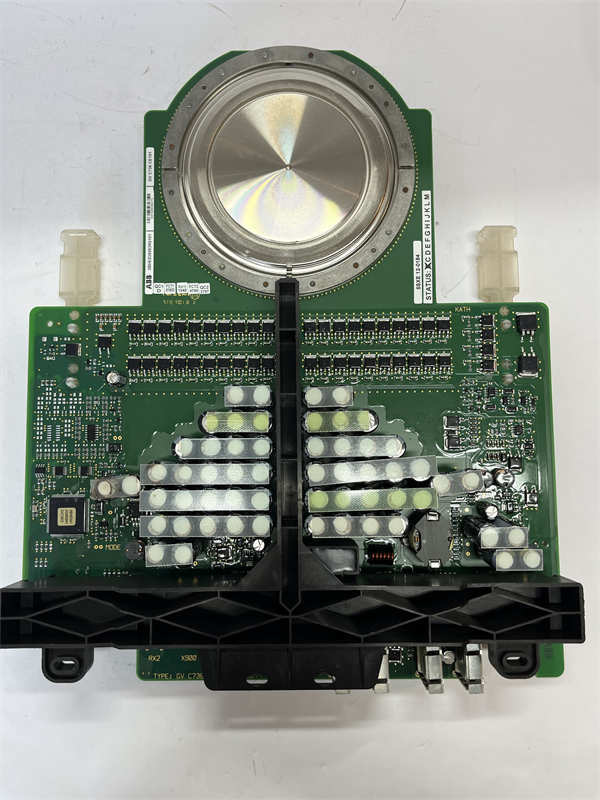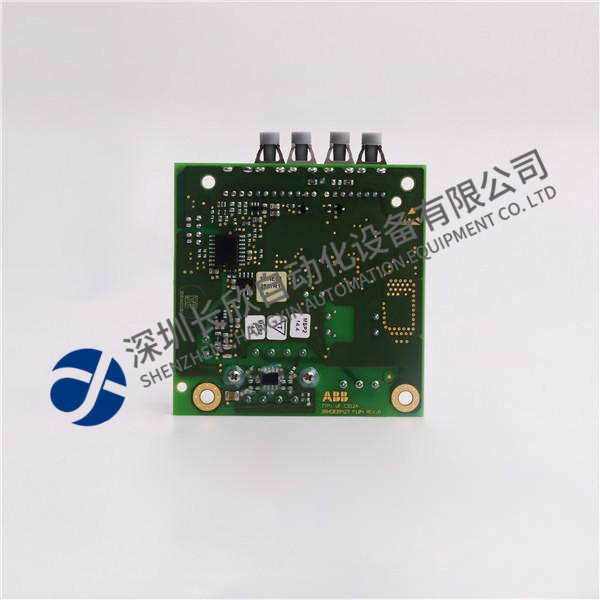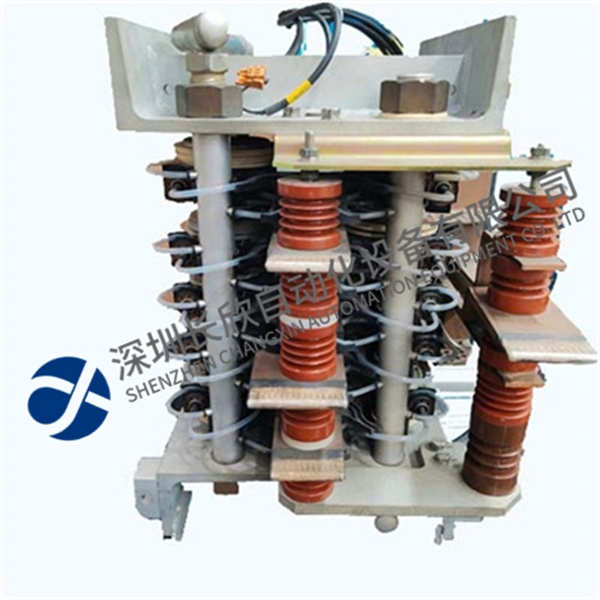描述
NI USB-6361是美国国家仪器(NI)推出的一款高性能、多功能的USB数据采集(DAQ)设备,专为需要高采样率、多通道同步和灵活配置的测试、测量及自动化应用设计。以下是其核心产品详情:
一、基本参数
接口与供电:
接口类型:USB 3.0(兼容USB 2.0),支持高速数据传输。
供电方式:总线供电(无需外部电源),支持低功耗模式。
通道配置:
模拟输入(AI):16路单端或8路差分输入,24位分辨率(Σ-ΔADC),支持高精度测量。
模拟输出(AO):2路,16位分辨率,更新率2.86 MS/s(每通道独立更新)。
数字I/O(DIO):24条双向通道,支持3.3 V/5 V逻辑电平,可配置为输入、输出或定时功能。
计数器/定时器:4个32位计数器,支持编码器输入、PWM输出、频率测量等。
采样率与同步:
模拟输入:最高2 MS/s/通道(多通道同步采样时速率共享)。
同步功能:支持多设备同步(通过RTSI总线或PFI信号),实现微秒级时间对齐。
输入范围:
模拟输入:±10 V、±5 V、±1 V、±0.5 V等可编程范围,支持过压保护(±30 V)。
模拟输出:±10 V固定范围。
二、核心特性
高精度与低噪声:
24位分辨率ADC提供156 dB动态范围,适合微弱信号采集(如振动、音频、生物医学信号)。
低噪声设计(如±0.5 LSB RMS噪声),确保信号保真度。
高速数据传输:
USB 3.0接口支持持续高速数据流,减少缓冲区溢出风险,适合长时间连续采样。
灵活的触发与同步:
支持硬件触发(如外部TTL信号触发采样或输出)。
通过NI-DAQmx的多设备同步功能,可构建大规模测试系统(如64通道同步采集)。
软件兼容性:
全面兼容NI-DAQmx驱动,支持LabVIEW、C/C++、Python、MATLAB等开发环境。
提供LabVIEW FPGA集成,可通过FPGA实现自定义实时信号处理。
三、典型应用场景
工业自动化与控制:
高速传感器信号采集(如加速度计、压力传感器)。
实时闭环控制系统(如电机控制、机器人运动控制)。
科研与测试:
生物医学信号采集(EEG、ECG、EMG)。
音频分析与频谱测试(如声学测量、麦克风阵列)。
航空航天与国防:
结构健康监测(SHM)、振动分析。
雷达与通信信号记录。
能源与电力:
电网信号监测(电压、电流谐波分析)。
太阳能逆变器测试。
四、优势与局限性
优势:
高采样率与分辨率:2 MS/s+24位ADC,兼顾速度与精度。
多通道同步:4计数器支持复杂时序控制,适合多传感器协同工作。
易扩展性:通过USB 3.0可轻松连接多台设备,构建大规模测试系统。
局限性:
成本较高:相比USB-6216等入门级设备,价格更高。
通道数固定:若需更多通道,需额外扩展设备或选择PXI平台。
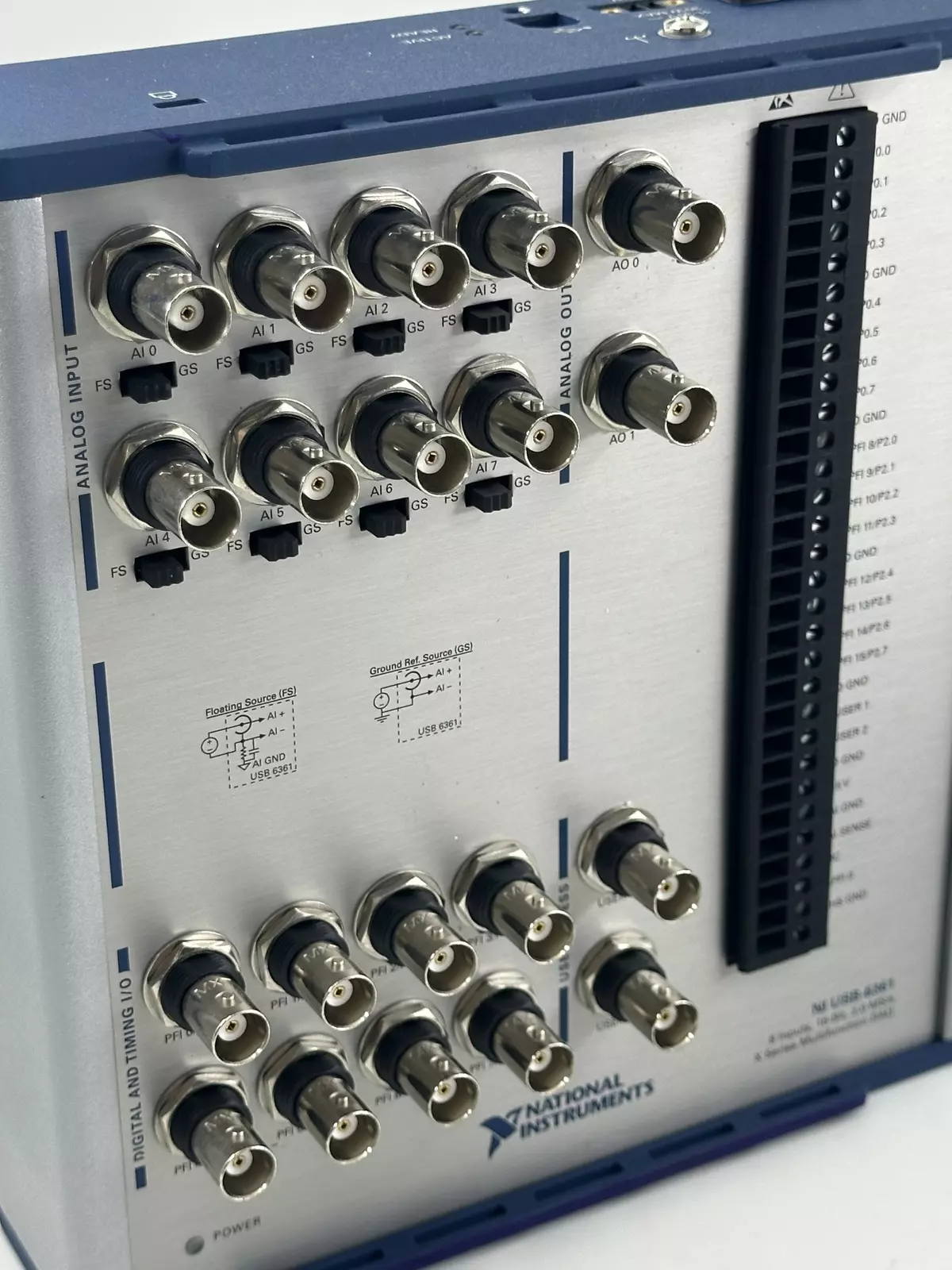
NI USB-6361 is a high-performance,multi-function USB data acquisition(DAQ)device launched by National Instruments(NI),designed for test,measurement and automation applications that require high sampling rate,multi-channel synchronization and flexible configuration.The following are its core product details:
I.Basic parameters
Interface and power supply:
Interface type:USB 3.0(compatible with USB 2.0),supports high-speed data transmission.
Power supply mode:bus power supply(no external power supply required),supports low power mode.
Channel configuration:
Analog input(AI):16 single-ended or 8 differential inputs,24-bit resolution(Σ-ΔADC),supports high-precision measurement.
Analog output(AO):2 channels,16-bit resolution,update rate 2.86 MS/s(each channel is updated independently).
Digital I/O(DIO):24 bidirectional channels,support 3.3 V/5 V logic levels,can be configured as input,output or timing functions.
Counter/Timer:4 32-bit counters,support encoder input,PWM output,frequency measurement,etc.
Sampling rate and synchronization:
Analog input:up to 2 MS/s/channel(rate sharing when multi-channel synchronous sampling).
Synchronization function:support multi-device synchronization(through RTSI bus or PFI signal)to achieve microsecond time alignment.
Input range:
Analog input:±10 V,±5 V,±1 V,±0.5 V and other programmable ranges,support overvoltage protection(±30 V).
Analog output:±10 V fixed range.
2.Core features
High precision and low noise:
The 24-bit resolution ADC provides 156 dB dynamic range,which is suitable for weak signal acquisition(such as vibration,audio,biomedical signals).
Low noise design(such as±0.5 LSB RMS noise)ensures signal fidelity.
High-speed data transmission:
The USB 3.0 interface supports continuous high-speed data flow,reduces the risk of buffer overflow,and is suitable for long-term continuous sampling.
Flexible triggering and synchronization:
Supports hardware triggering(such as external TTL signal triggering sampling or output).
Using NI-DAQmx’s multi-device synchronization function,you can build a large-scale test system(such as 64-channel synchronous acquisition).
Software compatibility:
Fully compatible with NI-DAQmx drivers,supporting development environments such as LabVIEW,C/C++,Python,and MATLAB.
Provides LabVIEW FPGA integration,and can implement custom real-time signal processing through FPGA.
III.Typical application scenarios
Industrial automation and control:
High-speed sensor signal acquisition(such as accelerometers,pressure sensors).
Real-time closed-loop control systems(such as motor control,robot motion control).
Scientific research and testing:
Biomedical signal acquisition(EEG,ECG,EMG).
Audio analysis and spectrum testing(such as acoustic measurement,microphone array).
Aerospace and defense:
Structural health monitoring(SHM),vibration analysis.
Radar and communication signal recording.
Energy and power:
Grid signal monitoring(voltage,current harmonic analysis).
Solar inverter testing.
IV.Advantages and limitations
Advantages:
High sampling rate and resolution:2 MS/s+24-bit ADC,taking into account both speed and accuracy.
Multi-channel synchronization:4 counters support complex timing control,suitable for multi-sensor collaboration.
Easy scalability:USB 3.0 can easily connect multiple devices to build a large-scale test system.
Limitations:
Higher cost:Compared with entry-level devices such as USB-6216,it is more expensive.
Fixed number of channels:If more channels are required,additional expansion devices or PXI platform are required.

